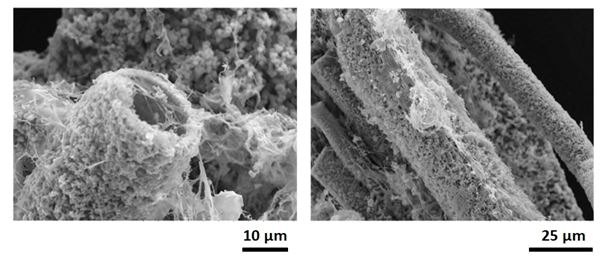“Our approach demonstrates a facile means of fabricating bio-inspired structures that can be incorporated into the development of novel regenerative materials”Erik Hughes
A new approach to producing bone replacement materials based on cells that grow around and inside them has been developed by a team from the University of Birmingham in the UK. Using a technique known as chemobrionics, they developed so-called 'chemical gardens' where chemical components are controllably manipulated to react together to allow for the self-assembly of complex bio-inspired structures, an innovation that could find applications in regenerative medicine.
The emerging field of chemobrionics examines the formation of self-assembling macro-, micro- and nanostructures, and can be a useful approach to biomaterial synthesis in tissue engineering. Although these 'chemical gardens' have been observed for many years ago, the team investigated if they could be used to provide new materials.
The body’s hard tissues, such as bones and teeth, are highly organized structures composed mostly of a calcium phosphate mineral, hydroxyapatite, with an inherent microstructural attribute of these tissues being tubular structures. Here, they wanted to explore if chemobrionic principles could help form architectures that are chemically and structurally similar to human bone, producing tubular calcium phosphate frameworks that not only imitate the functional structures found in hard tissue, but have the advantage of also being composed of a bone-like mineral.
As discussed in the journal Biomaterials Science [Hughes et al. Biomater. Sci. (2020) DOI: 10.1039/C9BM01010F], a gel loaded with calcium was placed in a layer beneath a solution of phosphate to grow long microscale hollow tubes of hydroxyapatite material. The individual structures grown, nearly as thick as human hair, have tubes with features such as porous surfaces that can promote interactions with cells. The researchers showed the similarity of the tubes to many structures found in bone tissue, including osteons, which are long cylindrical channels in bone that hold blood vessels, successfully testing how well they could support cell attachment, viability and growth with the aid of stem cells.
The findings showed that chemobrionic tubular calcium phosphate structures are an ideal substrate for the attachment of stem cells. It was found that extensive spreading of the cells upon and extending within the tubes was demonstrated after only 48 hours, which indicated favourable cell–material interactions. As lead author Erik Hughes told Materials Today,“Our approach demonstrates a facile means of fabricating bio-inspired structures that can be incorporated into the development of novel regenerative materials”.
The team hope to use further explore the tubular materials in tissue regeneration, as well as to develop new hierarchal biomaterials composed entirely of, or reinforced by, chemobrionic components to see if they could offer a new class of regenerative technologies capable of stimulating new bone formation that would help in the treatment of fracture non-union and spinal fusion.
 Scanning electron microscopy images of calcium phosphate tubular structures with cells attached. (Left) Cells interacting with the opening of a tube (Right) Cells displaying spreading and interaction on the outside surface of a tube.
Scanning electron microscopy images of calcium phosphate tubular structures with cells attached. (Left) Cells interacting with the opening of a tube (Right) Cells displaying spreading and interaction on the outside surface of a tube.